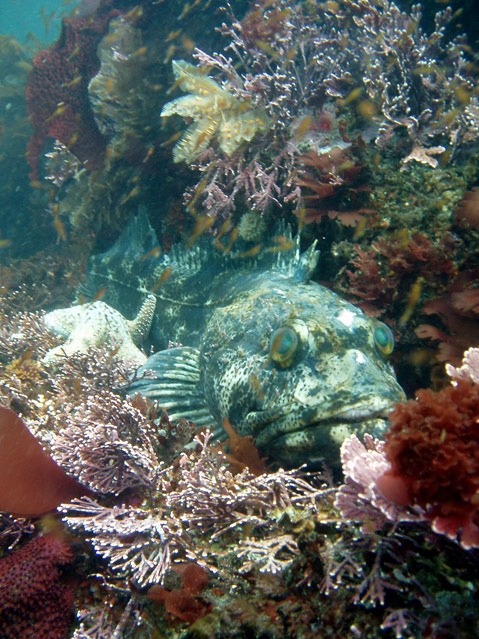Local Marine Protected Areas May Increase
State Agency Plans MPA Vote in Santa Barbara
A quiet struggle over the future of small but important patches of California’s coastal ocean will surge into the open on December 15 in Santa Barbara’s Hotel Mar Monte. That is when the California Fish and Game Commission has scheduled a final vote on a plan to reconfigure the network of Marine Protected Areas (MPAs) within the state’s southern territorial waters, including possible new zones off Goleta and Gaviota.

Fish and Game has already accomplished similar regulatory overhauls in two of its five coastal “study regions.” However, the South Coast Region, more commonly known as the Southern California Bight, is the biggest fish in the group. It encompasses 2,350 square miles of state coastal waters from Point Conception to the Mexican border. Seventeen million people live within 50 miles of this shoreline. At present, 42 MPAs of different types—adding up to slightly less than 182 square miles, or 7.7 percent of the total area—dot the zone.
Those who recognize the value of a healthy ocean and coast—from the recreational and commercial fisher folks to the divers, surfers, boaters and whalewatchers—must wonder why such a large region has such low numbers. But it gets worse: After subtracting the 13 federal-state MPAs surrounding the northern Channel Islands the amount currently protected shrinks to 14 square miles.
As ocean habitats with little or no legal biological or mineral extraction MPAs are life rafts for sea plants and animals, a place where they find relief from disruptive human activities. Some are called marine parks, reserves, or conservation areas; all are geographical entities with varying standards of protection or conservation.
Such details are the stuff of which even ecosystem paladins can, and often do, disagree. What many, but not all, agree on is that storm warnings are rising over the deteriorating quality of California’s marine habitats.
Symptoms such as declining recreational and commercial fish harvests, ineffectual protected areas, and diminishing ecosystem diversity prompted the state Legislature to seek to reverse such trends in 1999 with the Marine Life Protection Act (MLPA). One of the law’s primary goals is to reorganize existing MPAs into a coherent network, and Fish and Game was charged with taking the lead.
The commission’s decision this month on how best to protect South Coast Region habitats will be based on proposals from groups of stakeholders and the MLPA staff; public comment will be accepted before and during the meeting.

Counting a compromise plan, termed the “Integrated Preferred Alternative” or IPA, four competing proposals have emerged for the region. (See the details in the Draft Environmental Impact Report.) Goletans and other Santa Barbara County residents have a direct interest in which proposal is chosen. All plans but one call for new MPAs to be created off the Goleta and Gaviota shorelines, including at Point Conception and Naples Reef. The Goleta Slough conservation area could also expand.
Under these alternatives the region’s existing 42 MPAs could expand to 50 or contract to 37, but square mileage should at least double: Including the Channel Islands MPA network’s 168 square miles, total protected miles could grow to between 341.5 and 361, depending on the specific proposal. However, not all MPAs are created equal and, as usual, difficulties hide among the details.
Marine researchers, for example, have repeatedly documented the biological productivity of Naples Reef, not far from the City of Goleta’s western boundary. UCSB and UC Davis scientists reportedly told stakeholders that Naples’s 2.5-square-mile area produced as much biomass (the aggregate of all living things) as that of the proposed new MPA at Point Conception, which would be nine times greater in size. This hints at why the reef ‘s future status is disputed.
David Bacon, a recreational fishing boat skipper, thinks he is going to lose one of his prime destinations if Naples Reef becomes an MPA. “I’m a strong conservationist,” he says, “but MPAs are a grab by preservationists who want to shut down the most productive areas.” Traditional fisheries management methods, such as seasons, size and bag limits, are enough protection without creating no-take zones, he argues.
“MPAs bring the concept of the national park system to the oceans,” counters Greg Helms of the Ocean Conservancy and a veteran of the stakeholder skirmishes. Scientific research shows the approach is beneficial to wildlife and recreational users, he says, adding: “This is a crucial hearing. While the IPA looks similar to the proven Channel Islands MPA network, the commission has the authority to go larger or smaller.”
Mid-December promises to be warmer than usual in Santa Barbara.



